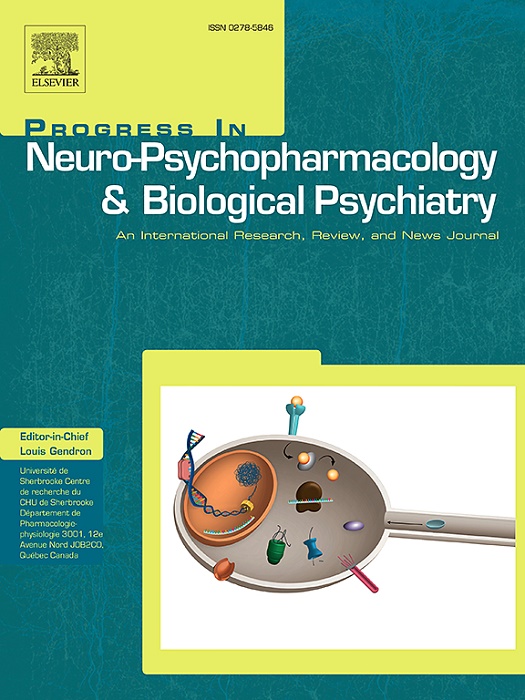Tract-based structural and functional connectivity abnormalities in bipolar I disorder
IF 5.3
2区 医学
Q1 CLINICAL NEUROLOGY
Progress in Neuro-Psychopharmacology & Biological Psychiatry
Pub Date : 2025-02-21
DOI:10.1016/j.pnpbp.2025.111297
引用次数: 0
Abstract
Background
Bipolar disorder (BP) is a complex mental illness with poorly understood neural underpinnings. This study aimed to investigate abnormalities in the structural and functional connectivity (FC) of white matter (WM) tracts in BP.
Methods
Diffusion magnetic resonance imaging (MRI) and resting-state functional MRI data were obtained for 56 patients with BP subtype I (BP-I) and 40 healthy controls (HCs). A total of 72 WM tracts and their corresponding start and end regions were automatically segmented based on diffusion image. The mean diffusivity (MD) and mean fractional anisotropy (FA) of each tract were calculated as proxies of tract-based structural connectivity. FC between the start and end regions of each tract was calculated as a proxy of tract-based FC. The analysis of covariance (ANCOVA) was used to compare the mean MD, FA, and FC values between groups, with multiple comparison correction based Hommel approach.
Results
Compared to the HCs, BP-I patients showed significantly lower FA in the corpus callosum, right and left cingulum, and right superior longitudinal fasciculus III as well as higher MD in the corpus callosum and commissure anterior. Among the tracts with abnormal structural connectivity, only the right SLF-III demonstrated significantly lower FC in the BP-I group than in the control group.
Conclusion
BP-I is associated with altered structural connectivity and FC in specific WM tracts, which provides insights into the pathophysiology of this disorder. More research is required to understand the diagnostic and therapeutic implications of these results.
双相I型障碍中基于神经束的结构和功能连接异常。
背景:双相情感障碍(BP)是一种复杂的精神疾病,其神经基础知之甚少。本研究旨在探讨BP中白质束结构和功能连接(FC)的异常。方法:对56例BP亚型I (BP-I)患者和40例健康对照(hc)进行扩散磁共振成像(MRI)和静息状态功能MRI数据分析。基于扩散图像自动分割出72个WM域及其对应的起始和结束区域。计算各通道的平均扩散率(MD)和平均分数各向异性(FA)作为通道结构连通性的代表。计算每个束起始和结束区域之间的FC,作为基于束的FC的代理。采用协方差分析(ANCOVA)比较各组间平均MD、FA和FC值,采用基于多重比较校正的Hommel方法。结果:与hc患者相比,BP-I患者胼胝体、左右扣带和右上纵束III的FA明显降低,胼胝体和前连合的MD明显升高。在结构连通性异常的束中,BP-I组只有右侧SLF-III的FC明显低于对照组。结论:BP-I与特定WM束的结构连接改变和FC相关,这为该疾病的病理生理学提供了见解。需要更多的研究来了解这些结果的诊断和治疗意义。
本文章由计算机程序翻译,如有差异,请以英文原文为准。
求助全文
约1分钟内获得全文
求助全文
来源期刊
CiteScore
12.00
自引率
1.80%
发文量
153
审稿时长
56 days
期刊介绍:
Progress in Neuro-Psychopharmacology & Biological Psychiatry is an international and multidisciplinary journal which aims to ensure the rapid publication of authoritative reviews and research papers dealing with experimental and clinical aspects of neuro-psychopharmacology and biological psychiatry. Issues of the journal are regularly devoted wholly in or in part to a topical subject.
Progress in Neuro-Psychopharmacology & Biological Psychiatry does not publish work on the actions of biological extracts unless the pharmacological active molecular substrate and/or specific receptor binding properties of the extract compounds are elucidated.

 求助内容:
求助内容: 应助结果提醒方式:
应助结果提醒方式:


